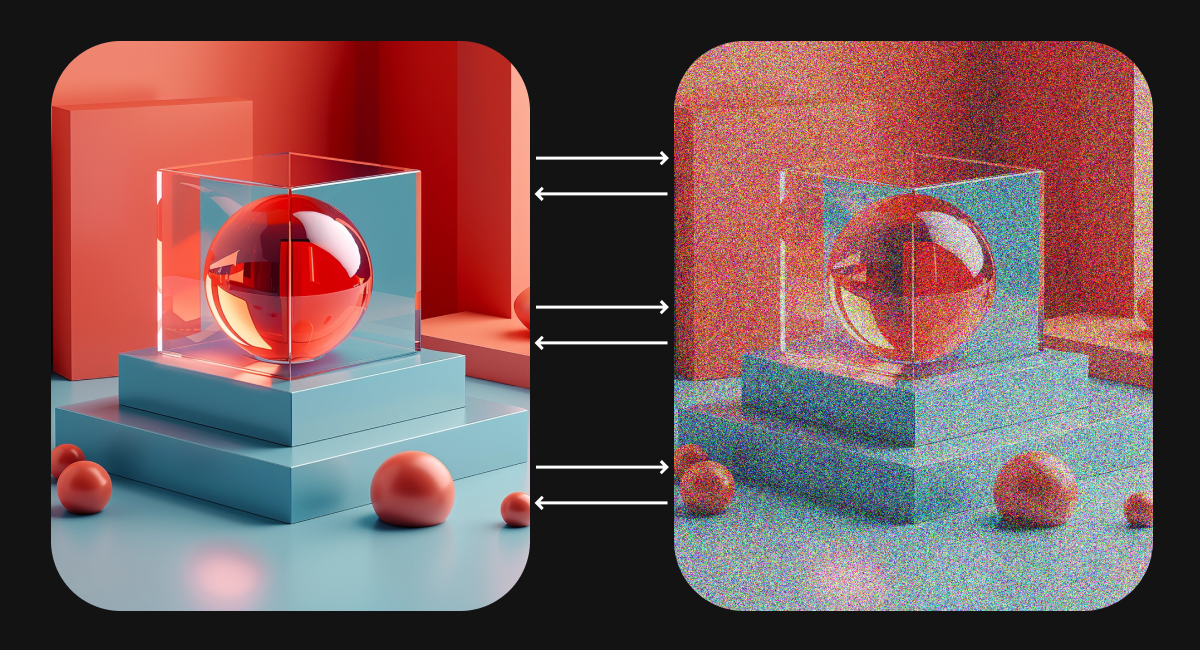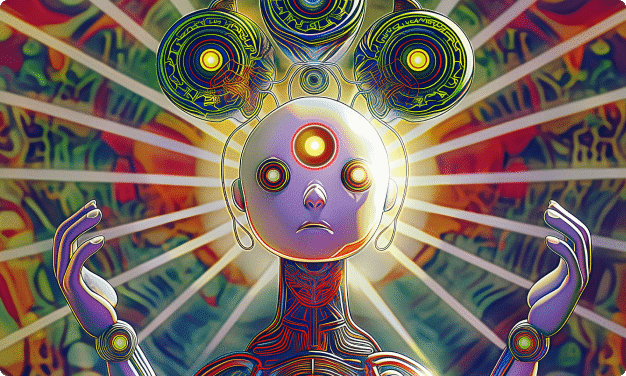Diffusion models for machine learning are cutting-edge technologies that are reshaping how we leverage artificial intelligence. They excel at generating and transforming data in ways we once thought were exclusive to human creativity.
Imagine an artist starting with a blank canvas, gradually building up layers of paint to create a beautiful picture. Diffusion models work in a somewhat similar way, starting with a form of digital “noise” and, step-by-step, transforming it into a coherent and detailed piece of content. They can create art, videos, music, and even new scientific research.
In this article, let’s dive deep into diffuse models for machine learning. We’ll explore their capabilities, applications, and their future. This exciting new frontier promises to redefine the limits of artificial intelligence.
What are Diffusion Models for Machine Learning?
Diffusion models are a type of technology used to generate new, unique images, sounds, or other data types. They are a powerful tool in the generative model toolkit, offering a flexible approach to creating new, high-quality data samples from learned patterns in existing data.
In physics, diffusion is a natural process where particles spread out in a medium from a region of higher concentration to a region of lower one, until a kind of equilibrium is reached. Machine learning models use a similar process to create content. (ML uses this name because of its conceptual similarities, rather than being a direct connection.)
Imagine you have a photo, and you gradually add a kind of digital fog to it, making it less and less clear until it’s just a random, unrecognizable pattern. In machine learning, we call this fog “noise.”
Diffusion models for machine learning work in reverse. They start with this randomness and gradually remove the noise (called “denoising”), step by step, following a specific set of rules, to create something structured and coherent, like an image.
Unlike traditional generative models, which often generate content in a single step or through a direct process, diffusion models introduce a novel, iterative process that gradually shapes randomness into structured output.
The fascinating part is that by controlling how the “fog” is removed, you can guide the model to create different things. For example, if you’re working with images, you can direct the model to generate a picture of a cat, a landscape, or anything else, depending on what you ask for.
This process allows diffusion models to create a wide variety of new, unique outputs based on the patterns they’ve learned from the data they were trained on. It’s like teaching the model to paint or compose music, but instead of using a brush or an instrument, it uses mathematical calculations and data patterns.
What is the Best Diffusion Model?
The “best” diffusion model depends on the context and specific application it is intended for. That said, several diffusion models offer impressive results in generating high-quality, realistic outputs. Here are a few noteworthy examples:
- DDPM (Denoising Diffusion Probabilistic Models): One of the foundational models in this space, DDPMs, have shown great promise in generating high-quality images and have laid the groundwork for many subsequent innovations in diffusion models.
- Improved Denoising Diffusion Probabilistic Models: Building on the original DDPM, these improved models offer enhancements that often result in faster training times and improved quality of generated samples.
- Guided Diffusion Models: These models allow more control over the generation process.Users can guide the output towards desired characteristics or attributes.
- Conditional Diffusion Models: Particularly useful in applications where the output needs to be conditioned on certain inputs, these models have shown great promise in tasks like text-to-image generation.
- Latent Diffusion Models: By operating in a latent space rather than directly in the data space, these models can offer computational efficiencies and sometimes generate higher-quality outputs for certain applications.
What are Stable Diffusion Models?
Stable Diffusion models are a specific subset of diffusion models.They share the foundational principles of diffusion models for machine learning, there are key aspects that set them apart.
While diffusion models can be used for a variety of data types, Stable Diffusion models are specifically fine-tuned for image generation. They excel at creating detailed and contextually relevant images based on textual prompts, offering a wide range of creative possibilities.
The term “stable” suggests a focus on consistency and reliability in the generated outputs. These models are engineered to produce coherent and visually appealing images that closely adhere to the input descriptions, minimizing the chances of erratic or nonsensical results.
Stable Diffusion models typically provide users with a high degree of control over the image generation process, allowing for detailed customization based on the text prompts. They are also designed to be more accessible and user-friendly, and can run on consumer-grade hardware.
Is Midjourney a Diffusion Model?
Midjourney is an independent research lab that has developed an AI system known for generating images from textual descriptions, similar to other AI image generation tools.
While the specific technical details of Midjourney’s underlying model are not as publicly documented or transparent compared to other AI models like DALL-E or Stable Diffusion, it probably involves techniques like diffusion models.
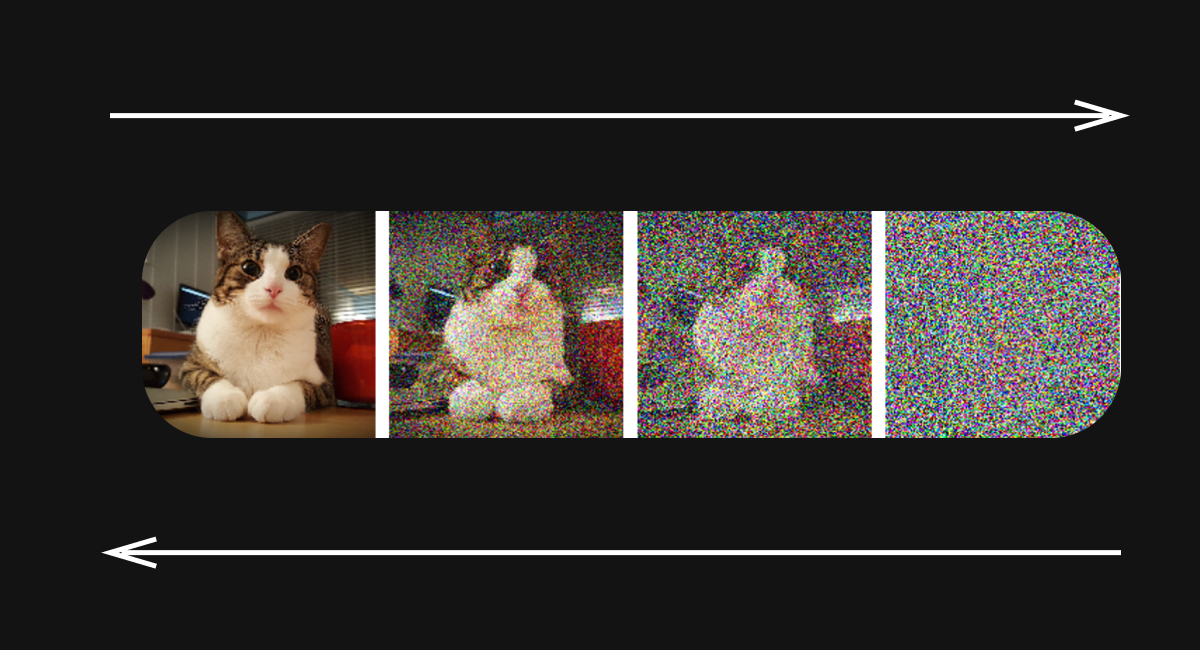
The Mechanics of Diffusion Models
Diffusion models for machine learning involve a fascinating journey from chaos to order, transforming randomness into meaningful data through a series of meticulously orchestrated steps. Let’s break down this journey into its fundamental components:
1. Data Preprocessing
Before anything else, the raw data must be prepared and conditioned for the model. This involves cleaning the data, normalizing it, and perhaps transforming it into a format that the model can effectively work with. This step ensures that the model has the best possible starting point for the diffusion process.
2. Forward Diffusion
Think of forward diffusion as the process of gradually adding layers of complexity or “noise” to the data. This doesn’t mean turning the data into complete chaos but rather introducing a controlled amount of randomness step by step.
Over time, this process transforms the structured data into something that appears random and unstructured. The magic lies in how these changes are applied, as the model carefully tracks each step, which is crucial for the next phase.
3. Reverse Diffusion/Denoising
Once the model has added noise to the data, it’s time to reverse process. This involves learning how to remove the noise it previously added, step by step, to return to the original data or create something new yet coherent.
The model iteratively denoises the sample over a series of steps. At each step, the model predicts a less noisy version of the image, gradually refining the noise into structured data (the image). It can be guided by conditioning on specific attributes or features (e.g., class labels, text descriptions) to generate targeted outputs. This is especially relevant in models that are trained to generate images from textual descriptions or other conditioning information.
4. Final Output
After a fixed number of iterations, the output is a coherent image that has emerged from the initial noise. The number of steps in this reverse process typically matches the number of steps in the forward process.
Training Data for Diffusion Models
The training data plays a crucial role in the performance and capabilities of these models. It should be diverse, high-quality, and ethically sourced. The data plays a pivotal role in determining the model’s capabilities, generalization, and the diversity of its outputs.
Let’s delve into the aspects of training data in relation to diffusion models:
Data Quality and Quantity
The quality and quantity of the training data significantly influence the performance of diffusion models. High-quality, diverse, and large datasets enable the model to learn a wide range of features and nuances, leading to more detailed and accurate outputs. In contrast, limited or biased data can result in overfitting or poor generalization.
Data Diversity
Diversity in the training data is essential for the model to learn and generate varied outputs. For image generation, this means having images with diverse subjects, styles, and contexts. The more diverse the dataset, the more capable the model is of generating different types of images.
Data Labeling and Organization
While diffusion models for image generation often learn from unlabeled data, the organization and structuring of the dataset can impact training. For instance, categorizing images into different classes or attributes can help in conditional generation, where the model generates images based on specific conditions or prompts.
Data Preprocessing
Preprocessing steps such as normalization, resizing, and augmentation can affect the training process. These steps help ensure that the model is not learning from noise or irrelevant variations in the data.
Data Ethics and Bias
The data used to train diffusion models should be ethically sourced, and care should be taken to avoid biases. Models trained on biased data can perpetuate or amplify these biases in their outputs. It’s crucial to ensure that the training dataset is representative and does not contain harmful stereotypes or content.
Data Source and Licensing
The source of the training data is another important consideration. It’s essential to use data that is legally and ethically permissible to use. This involves understanding the licensing of the datasets and ensuring compliance with any associated requirements or restrictions.
Continuous Learning and Data Updates
As with any machine learning model, diffusion models can benefit from continuous learning, where the model is periodically updated with new data. This can help the model adapt to new trends or changes in the data distribution.
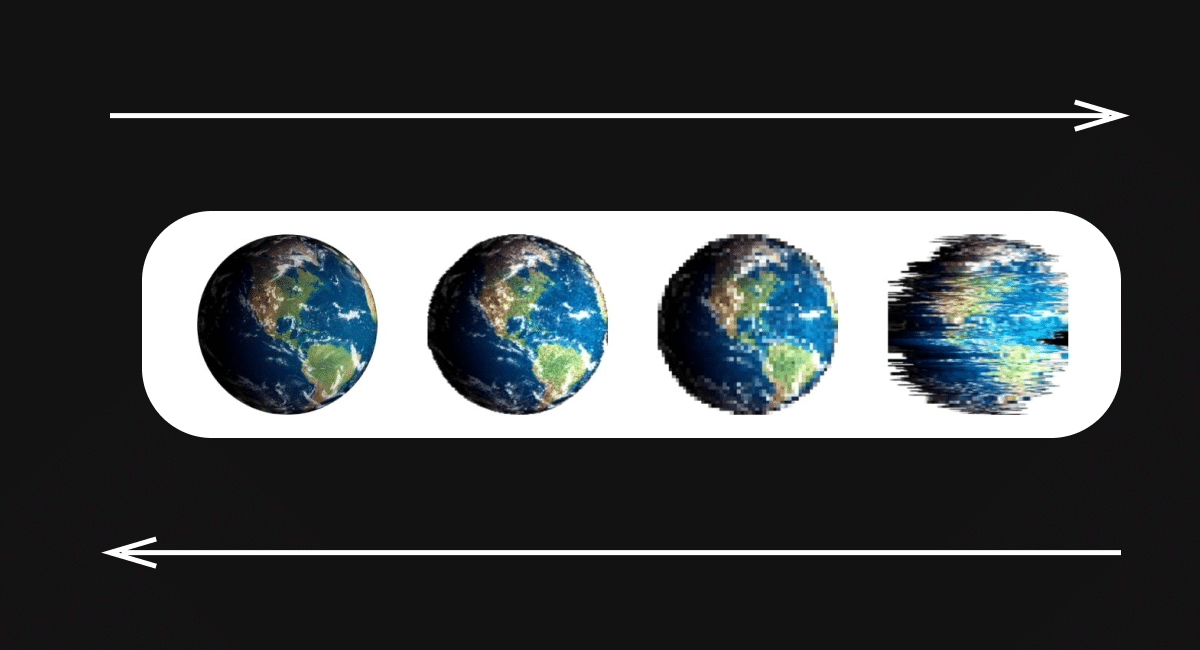
Execution of Diffusion Models
The execution of diffusion models is where the theoretical meets the practical, turning sophisticated algorithms into actionable insights and outputs. Whether in research, entertainment, or industry, the way these models process data can significantly influence their efficiency and effectiveness.
Key to this process are batch processing methods, real-time streaming capabilities, and Change Data Capture (CDC), each catering to different needs and scenarios in the utilization of diffusion models.
Batch Processing Methods
Batch processing is akin to preparing a large meal for a gathering—instead of cooking dishes one at a time, you prepare everything in large quantities all at once.
In the context of diffusion models for machine learning, batch processing means the model processes large sets of data in a single go, rather than piece by piece. This method is particularly useful when the immediacy of the output is not critical, but the consistency and thoroughness of the analysis are.
By processing data in batches, diffusion models can efficiently handle large volumes of data, making this method ideal for applications where time is not of the essence, but depth and quality of analysis are paramount.
Real-Time Streaming Capabilities
On the other end of the spectrum is real-time streaming, which is like cooking a meal to order in a restaurant. As soon as the order comes in, you start preparing it, delivering it hot and fresh.
In real-time streaming, diffusion models process data as it comes in, without waiting to accumulate a large batch. This capability is crucial in scenarios where immediate response or action is required, such as in financial trading algorithms, live social media content moderation, or emergency response systems.
Change Data Capture (CDC) for Dynamic Data Sets
Change Data Capture (CDC) is a sophisticated method that tracks and processes only the changes in data, rather than the entire data set. This approach is highly efficient for dynamic data sets where changes are the critical focus, such as tracking stock market fluctuations or monitoring changes in weather patterns.
CDC allows diffusion models to be more efficient by focusing their processing power on new or altered data, ensuring that the system remains agile and responsive to changes without being bogged down by redundant analysis.
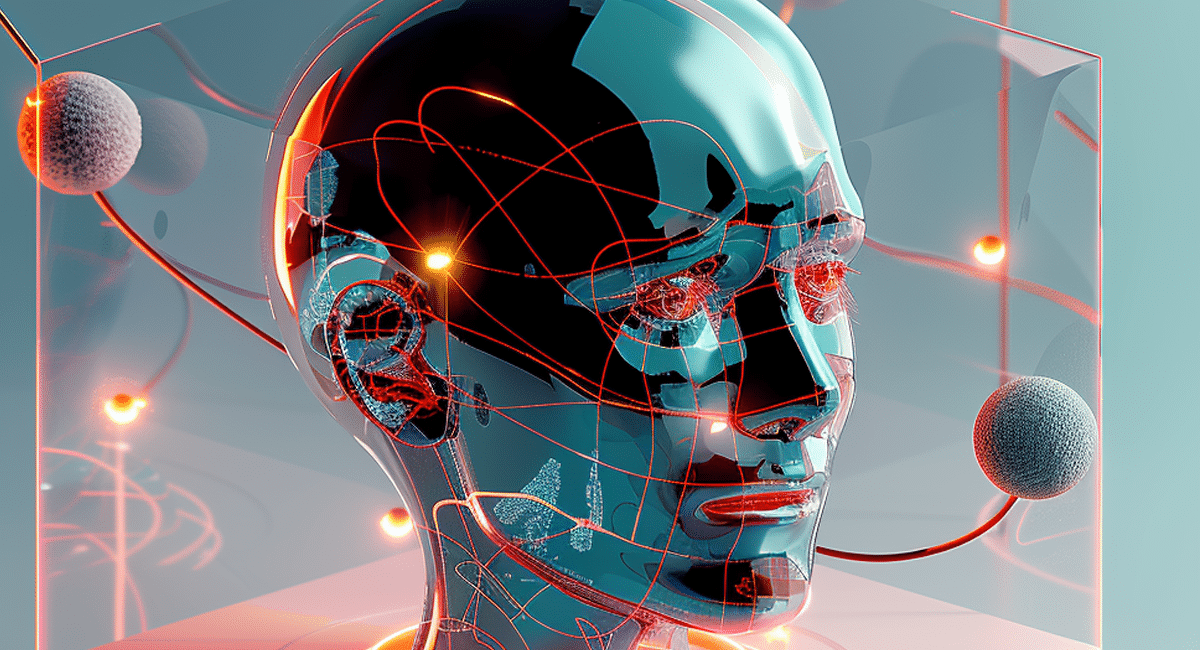
Future Directions and Ethical Concerns
The future directions of diffusion models in machine learning are incredibly promising. However, as these models become more integrated into our tools, it’s crucial to address the accompanying ethical concerns to ensure responsible and beneficial use.
Future Directions
- Enhanced Realism and Detail: Future developments in diffusion models are likely to produce outputs with even greater realism and detail, enhancing applications in fields like digital art, entertainment, and virtual reality.
- Broader Application Scope: Beyond image and audio generation, diffusion models could be extended to more diverse domains, such as drug discovery, climate modeling, and advanced simulations in engineering and physics.
- Improved Efficiency and Accessibility: Ongoing research aims to make diffusion models more efficient, reducing their computational demands and making them more accessible to a wider range of users and applications.
- Interactive and Conditional Generation: Future advancements may enable more sophisticated interactive capabilities, allowing users to guide the generation process in real-time with high precision, enhancing creative and practical applications.
Ethical Concerns
- Copyright Infringement: Diffusion models are trained on vast datasets that might contain copyrighted content without proper licensing, leading to generated outputs that closely resemble or replicate existing works. Many jurisdictions are dealing with this now. Japan, for instance, has declared that it will not enforce copyrights for AI training. US courts has ruled that AI generated content cannot be copyrighted.
- Data Privacy: As diffusion models often require large datasets for training, there’s a risk of infringing on privacy, especially if the data contains personal or sensitive information. Ensuring data is obtained and used ethically is paramount.
- Misuse Potential: The ability of diffusion models to generate realistic outputs raises concerns about their potential misuse, such as creating deep fakes, spreading misinformation, or generating harmful content.
- Bias and Fairness: Like all machine learning models, diffusion models can perpetuate or amplify biases present in their training data. It’s crucial to address these biases to prevent unfair or discriminatory outcomes.
- Transparency and Accountability: As diffusion models become more complex, ensuring transparency in how they operate and are applied is essential for trust and accountability, especially in critical applications like healthcare or law enforcement.
Conclusion
Diffusion models for machine learning offer a new paradigm for generating and refining data. These models stand out for their ability to transform randomness into structured, meaningful outputs, demonstrating a remarkable capacity for creativity and innovation in AI.
As we look to the future, the role of diffusion models in shaping AI development cannot be overstated. Whether it’s in creating stunning visual content, generating realistic simulations, or providing innovative solutions to complex problems, diffusion models for machine learning are at the forefront of AI’s next wave of breakthroughs.
The journey of exploring and operationalizing diffusion models is not just a technical endeavor but a step toward a more innovative, dynamic, and intelligent future. As these models evolve, their impact on technology and society is poised to grow, marking a new chapter in the ongoing evolution of artificial intelligence.
